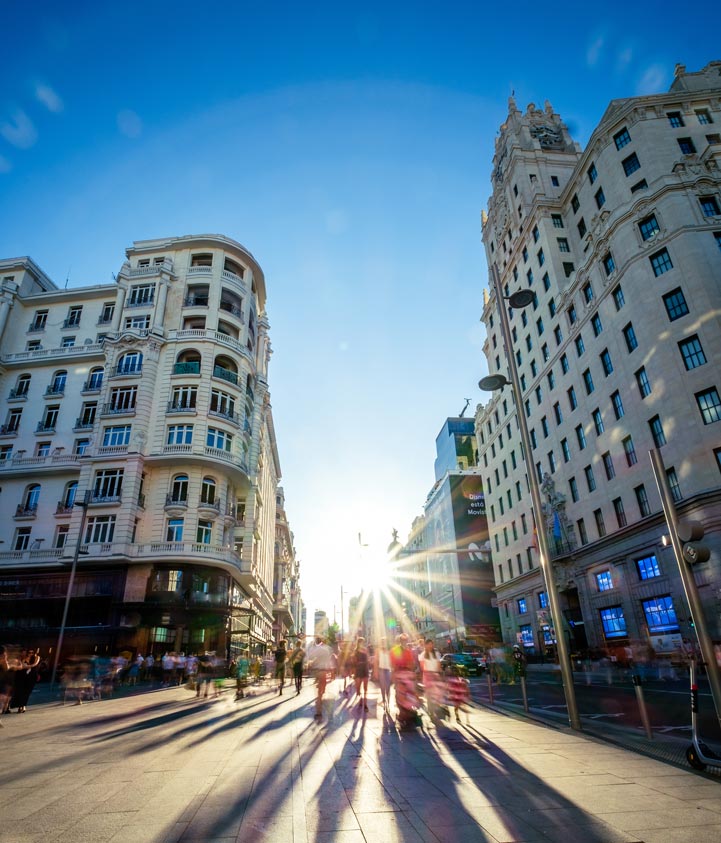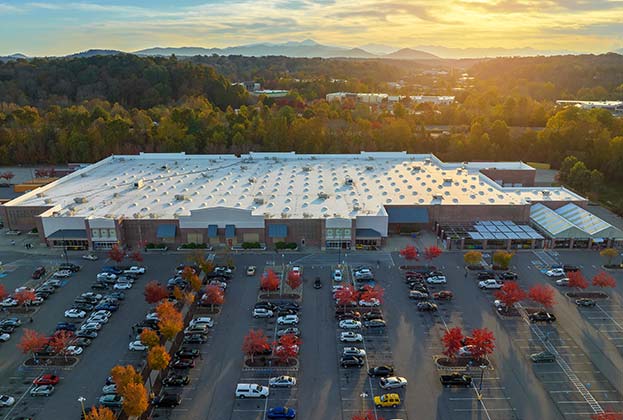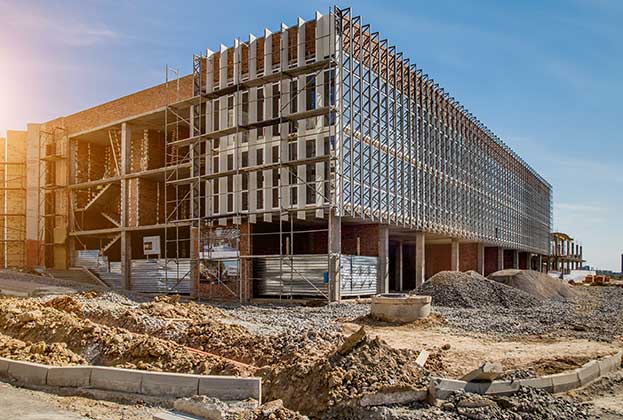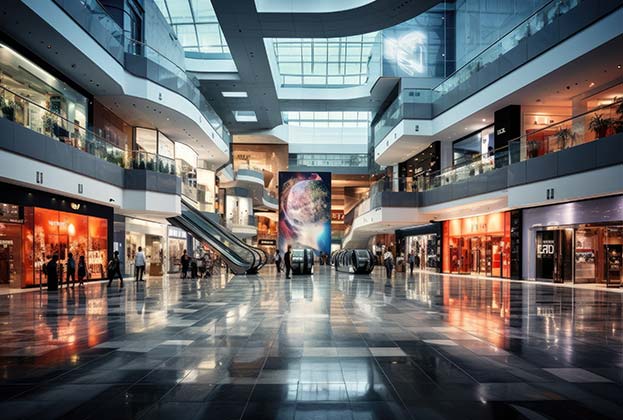Milan’s Via Monte Napoleone tops the ranking as Europe’s most expensive retail street
Milan’s major luxury street, Via Monte Napoleone, now outranks London’s luxury Bond Street as the most expensive retail street in Europe with prime rents of €14,000 per sqm per annum, 7.7% higher than where they were pre-pandemic. A number of other luxury streets have also seen an improvement in rents or, at the very least, were able to minimise pandemic declines and have started to recover. For instance, across the 16 luxury streets we track in Europe, average prime rents as of Q3 2023 are only 2.0% below where they were in Q4 2019, having increased by 1.2% on the pandemic lows seen in late 2021.
Perhaps of most interest is the fact that much of this growth and resilience has been driven by smaller luxury streets beyond the big luxury capitals of Milan, Paris and London, with average rents 1.0% ahead of 2019. This resilience has been supported by more restrained availability, but also the fact that many of these smaller markets are predominately driven by domestic spend. In contrast, the premier luxury streets in London and Paris were more exposed to the absence of international visitors, a key driver of performance in both cases.
The recovery in international travel is supporting an acceleration in the recovery of Bond Street and Avenue Montaigne. Bond Street, for example, has seen vacancy reduce by 721 bps on its 2021 pandemic vacancy high of 13.6%; rents are up 14.3% over the same period.
Smaller affluent cities moving up the agenda for luxury brands
The localisation of luxury spend during the pandemic – online or through department stores – has provided many luxury brands with greater insight into where their customers live, and is also helping to identify markets that were perhaps relatively underserved. This, combined with an evolving strategy by some luxury brands to understand both where their consumers live and where they holiday, is generating new requirements across a range of smaller affluent European cities, as well as a desire by some brands to upsize existing stores in key markets. All of this is then being exacerbated by the general shift away from wholesale towards own-brand stores, which is also feeding into store strategies. Ultimately, helping to drive down vacancy and place further upward pressure on rents on prime luxury streets.

Recovery on Europe’s prime mass market streets starts to pick up pace
The impacts of the pandemic were perhaps the most profound and drawn out on Europe’s major mass market streets, locations that were already facing challenges due to growing online spend and reduced occupier demand for large flagship units. For example, vacancy pre-pandemic on London’s Oxford Street (western end) had climbed 543 bps over the course of 2019.
However, recovery in these locations is starting to pick up pace. Based on a select number of markets where we have historical vacancy trends, the vacancy rate has compressed by an average of 639 bps since their pandemic peak and is now on average only 64 bps above where they were in 2019. Madrid’s Preciados vacancy is zero, in Q1 2020, it was at 5.0%. This squeeze on vacancy is starting to generate upward pressure on rents in some markets, albeit largely confined to those smaller markets with tighter levels of supply. Beyond London, Paris and Milan, the prime mass market streets across Europe have seen average rental growth of 2.2% since 2021.
As with the luxury streets, it’s been those more ‘expensive’ mass market streets where international footfall constitutes a larger component of spend that continue to lag, with Champs-Élysées in Paris and Oxford Street (west) in London being prime examples of this. Vacancy ranges from 9-12% with prime rents are at least 25% below where they were in 2019 on both streets, but these locations are both undergoing significant change via major redevelopments and enhancement of their public realm. Changes that will ultimately enhance their appeal to visitors, and in turn brands, as evidenced by recent leasing activity.
What’s driving occupier demand on these prime high footfall high streets?
Firstly, occupier demand for prime high streets across Europe has seen a strong bounce post the pandemic. And in some markets, such as southern Europe, demand is perhaps stronger than what was seen in 2019. There are some concerns around the strength of consumer spending going into 2024, which is generating headwinds in some markets such as Germany and the Nordics. But in most cases, brands are taking a longer-term view buoyed by strong balance sheets alongside rebased rents and improved availability in target markets.
What is perhaps different post-pandemic is the focus by some occupiers on city-centre locations. There is a definite appetite from brands to be in city centres to enhance their visibility to a greater number of customers, with a view to drive sales. Even with the entrenchment of agile working, prime high streets across Europe can deliver on this visibility and for a range of cities we track, prime segments on key mass market high streets can have an average monthly footfall of above 860,000. On Champs-Élysées, a unit on its prime pitch could see footfall as high as 1.5 million per month.
When it comes to who has and will be driving this demand going forward, the profile of occupiers and their specific requirements is perhaps the most diverse than we have ever seen (see page Occupier Trends for more detail). Even for the major fashion groups and their stable of brands, such as Zara and H&M, their occupational demands vary from market to market, ranging from upsizing flagships to rolling out new smaller concept stores in order to enhance their ability to secure new sites and grow their footprint.
Read the other articles within European Retail Market below
.jpg)



.jpg)


